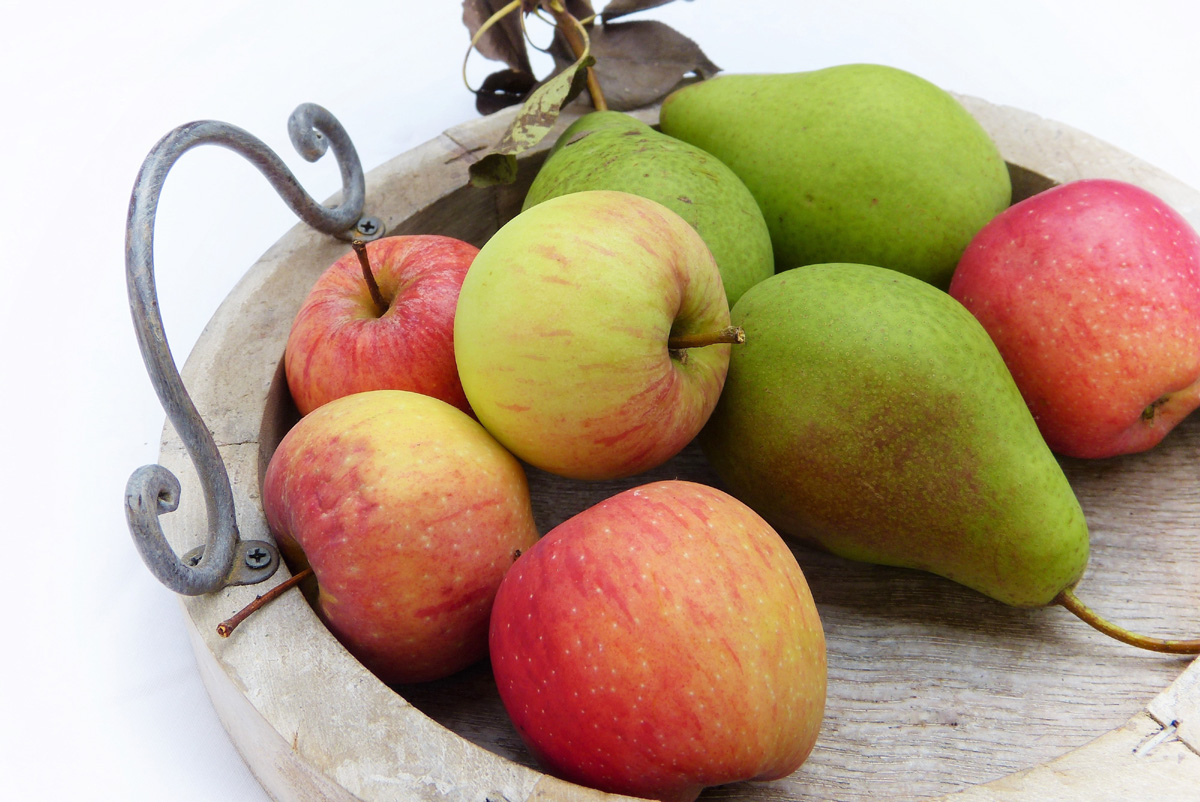If you have a harvest of apples and pears from your garden every year, it is possible to store the surplus through the winter months just by following a few simple guidelines.
The traditional way of storing apples and pears in a cool storeroom is still the best. It is a good way of keeping a glut of fruit to eat through the winter. Some fruit will last a few weeks and some will last many months depending on which varieties you grow. Some late varieties actually need to be stored in order for them to ripen properly.
Finding a place with suitable conditions is imperative for success. The temperature needs to be stable, below 10 degrees Celsius and definitely frost-free. There should be good air circulation as well.
It is very important that your fruit store should not be accessible to mice or birds. If you want to share some of your fruit with wildlife, it can be sliced up and left on a bird table, but an infestation of mice could ruin a whole store.
You can use a cool attic or cellar to store your apples and pears in. If you want to use a shed or garage it must be insulated and should not contain any chemicals. Any room in a centrally heated house will probably be too warm to be used as a fruit store.
When choosing which fruit to store whole, only pick those specimens which are not damaged in any way. Any fruit that is bruised or has damaged skin can be processed and stored in other ways.
Wash the fruit well and dry it thoroughly; you don’t want to wrap any fruit up if it has moisture on the skin. Then wrap each fruit in a waxed paper such as baking paper. Cooking apples can be wrapped in newspaper but pears should be left unwrapped. The apples can be put into layers in boxes but the pears should not be touching each other. They must be stored in a single layer so that each fruit is completely surrounded by air.
If you want to leave your apples unwrapped, they have to be kept isolated in the same way as the pears. They will dry out more quickly but they will be easier to inspect.
The fruit must be checked on frequently, and any fruit that shows signs of deterioration should be removed from the store, but it need not be wasted altogether.
Label your trays with the name of the crop and a date if you add stock to your store at different times through the autumn. You may want to keep a record of which varieties last the longest and which should be eaten first in future years.
The stored apples can be eaten as they are or baked or stewed.
Individual fruits that are not good candidates for storage can still be used in other ways; they just need more preparation. All the damaged parts should be cut away and put on the compost heap.
The parts that are undamaged can be cooked and the frozen puree made into desserts later. They can be juiced in a juice extractor and the juice can be frozen. They can be bottled in syrup or turned into chutney. They can be made into sauces. They can be oven dried and stored in jars.
Nicely presented storage jars full of dried fruit or chutney make nice presents to give to people in the winter months. They can be put in food hampers for elderly people and make small thank you presents for neighbors who do you favors.
Fruit left to rot on the ground is a terrible waste and won’t do a lawn any good either. If you have too much fruit for your own needs, there will always be people only too pleased to receive some of your harvest. Ask at food banks if you don’t have enough family, friends and colleagues to share it with.
The Author:
Christina Sinclair is a lecturer and self-published children’s author with qualifications in design. She is now writing ‘The Salty Sam Fun Blog for Children’ which is to be found on her website. The blog has articles about history, science, nature, gardening and environmental issues. It also has free craft downloads, knitting patterns, easy recipes and other projects for children. Visit it at christina-sinclair.com/blog/
